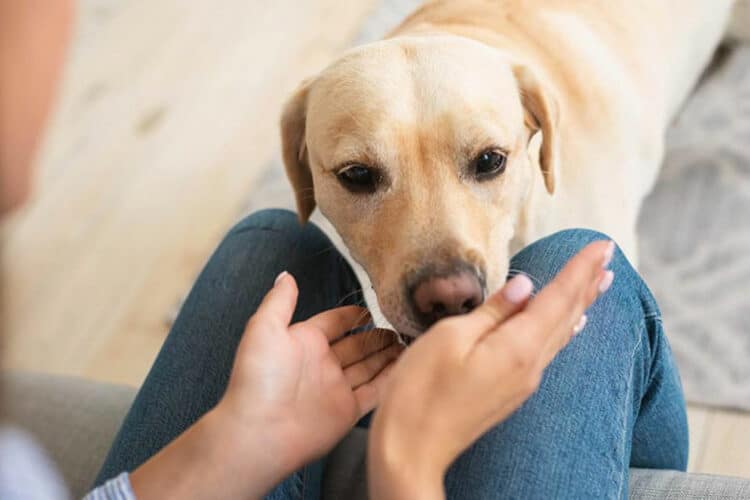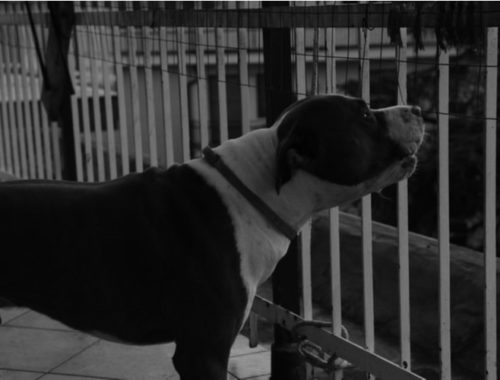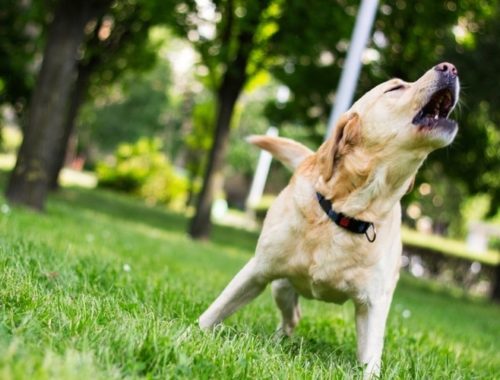A dog’s sixth sense is no secret. They’re deeply attuned to human moods and emotions and know exactly when to comfort us when we’ve got a case of the blues, can sniff out even the subtlest sign that something isn’t quite right, and even, in some cases, detect when a person is unwell. But can dogs tell when a human has cancer?
According to science, they can with the right training. In this post, we’ll investigate what studies show about this phenomenon.
Can Dogs Smell Cancer in Humans?
Research has confirmed that dogs have the ability to sniff out illnesses, including cancer. This comes down to the fact that a dog’s sense of smell is so sharp. To put this into perspective, dogs have up to 300 million scent receptors in their noses, compared to the mere 5 million that humans have.
It is this acute sense of smell that helps dogs to smell cancer. Cancer cells give off odors known as volatile organic compounds that leave traces in the body or leave the body via secretions (breath, urine, etc.), and it is this odor that dogs can smell.
For example, if a medical sniffer dog smells the breath of a person with lung cancer, they would be able to detect cancerous cells. If presented with a biopsy sample, they would be able to detect cervical cancer cells.
On that note, dogs need to be trained to be able to do this. This is done by having dogs smell a variety of secretions, such as breath, urine, and plasma. Over the course of a few months, this teaches them to distinguish between healthy and unhealthy samples.
How Do Dogs Indicate the Presence of Cancer?
A dog signaling the presence of cancerous cells may behave in a variety of ways, largely dependent on what they’ve been trained to do and individual temperaments. According to one woman who was diagnosed with ovarian cancer, her husky, Sierra, put her nose on her lower belly and sniffed intently before curling up into a ball with her nose under her tail in distress.
In another instance, a search-and-rescue dog is said to have detected her owner’s lung cancer and signaled it similarly to how Sierra the husky had done, but on the chest. The dog also pawed at her human in a distressed manner.
From what cancer patients have reported, it appears that dogs commonly signal cancer by sniffing at the affected area of the body, nudging or putting their nose on the area, pawing at the person, and becoming distressed, anxious, or extra clingy.

Are There Medical Sniffer Dogs?
Yes. As an example, Medical Detection Dogs, a U.K. organization, works closely with the National Health Service (NHS) and researchers from around the world to understand how these specially trained dogs could help in the diagnosis of cancer and other illnesses.
The organization’s ultimate goal is that its work contributes toward doctors being able to detect and diagnose cancer much earlier and save more lives as a result.
The organization also trains dogs as medical alert assistance dogs. These dogs help to support people with existing health conditions such as Type 1 Diabetes and Addison’s Disease and are trained to give alerts when they sense an imminent emergency.
Final Thoughts
So, there we have it! A dog’s sense of smell is so acute that they can be trained to sniff out cancer and other illnesses in humans. This is just another thing to add to the already long list of why dogs are amazing.
If your dog seems unusually preoccupied with a certain part of your body or is showing the signals described in this post, it doesn’t necessarily mean that you have cancer or some kind of illness—sometimes, dogs are just plain nosy and it’s usually trained sniffer dogs that detect cancer—but it may be worth getting a checkup to make sure your pooch isn’t really onto something.
Featured Image Credit: Shutterstock














